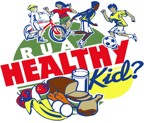June 30, 2008
New program helps kids at risk for Type 2 diabetes

CARBONDALE, Ill. -- He was --no way around it -- large. Yet in just a few months, the boy, a Harrisburg middle-schooler, lost about 10 percent of his body fat and could wear clothes four sizes smaller.
To Sharon L. Peterson, creator of the innovative program that helped that boy transform himself, the pounds he’d shed were a side benefit, but not the main point.
“We’re focusing on health outcomes, not body weight,” said Peterson, a registered dietitian and community nutritionist who came to Southern Illinois University Carbondale as an assistant professor in 2006.
“While we do work with self-esteem and body image, I get my feathers ruffled when this program is perceived as one that rounds up all the kids who are overweight -- that’s not what we’re about. We’re trying to help kids at risk for developing Type 2 diabetes -- the kind that used to be referred to as ‘adult onset diabetes’ -- build the kind of healthier lifestyle that will reduce those risks. Overweight is a risk factor, but you can develop Type 2 diabetes without being fat.”
Peterson’s years of private practice in the region had put faces -- and bodies -- to the dry statistics about rising rates of obesity and diabetes in kids. She designed her program, R.U.A. Healthy Kid?, to buck those trends.
You can’t change some risk factors for Type 2 diabetes. If you’re not white or if someone in your family has diabetes, your odds increase. Still, most risk factors -- physical inactivity, a high proportion of body fat, high blood pressure and insulin resistance -- respond to changes in behavior. And because those risk factors intertwine, changes in one often spill over into another.
Based on her professional experience, extensive reading on behavior and motivation and a massive search through published material about childhood obesity, Peterson decided to tackle four key areas where changes could help kids cut their diabetes risk. In addition to feeling better about themselves and their bodies, she wanted them to eat meals at home, make good snack choices and replace screen time (spent on computers, TV watching, games, texting) with some kind of physical activity.
To give them the information and skills they’d need to make those changes, she’d mix training sessions with weekly phone calls and e-mails, a social networking Web site and a newsletter. And to see if it worked, she’d collect data before, during and after the six months her program would run.
“That makes us unique,” Peterson said.
“No one that we’re aware of is actually trying to intervene and measure changes in at-risk kids through a community-based program -- we’re the first in the country to do this.”
Working with Harrisburg Middle School, Peterson and her team of undergraduate and graduate students started early in 2007 looking for kids they deemed likely to develop Type 2 diabetes based on the presence of three or more risk factors. They found 54 youngsters.
“Fifty-three of them had a high body mass index -- that’s an indicator of how strong that particular risk factor is,” Peterson noted.
Only 18 of the 54 signed up for the pilot program, but because Peterson and her team were reinventing and tweaking as they went along, “that was plenty,” Peterson said, laughing.
“And we only lost one kid (as a drop-out). I feel good about that because this is a tough age to keep interested.”
While the boy who shrank four sizes was probably their most notable success, all the kids made what Peterson called “tremendous progress,” although you might not know that if you looked only at their weight.
“Over the six months, overall body weight actually increased significantly,” she said.
“But these are adolescents, so they’re still growing. In addition, muscle weighs more than fat.
“That’s where the body analysis comes in. We found that their percent of body fat as a group significantly decreased. Their pounds of body fat as a group also significantly decreased, and their pounds of muscle significantly increased -- it’s beautiful. It’s exactly what we would have hoped for as far as outcomes.”
It’s worked so well that Peterson has received more than $260,000 from the Illinois Soybean Association to expand the program to kids in Anna-Jonesboro, Cairo, Cobden, Highland and Vienna.
The diversity of settings will allow her to test the program’s effectiveness with African-Americans, Hispanics, Caucasians, rich kids, poor kids, high schoolers and pre-teens. She also hopes to pinpoint which components of her program get the best results.
“Our long-term vision is to develop ‘hubs’ throughout the region to provide ongoing intervention programs to which physicians can refer children at risk,” Peterson said. “We can envision graduates of the program returning to serve as mentors and role models.
“The ultimate goal is to get something tangible that we can package -- a Web site or a curriculum or a board game or all of the above -- so that we can share this throughout the state or even perhaps throughout the country with people who are concerned about the rise in Type 2 diabetes in children and want to do something about it.”
